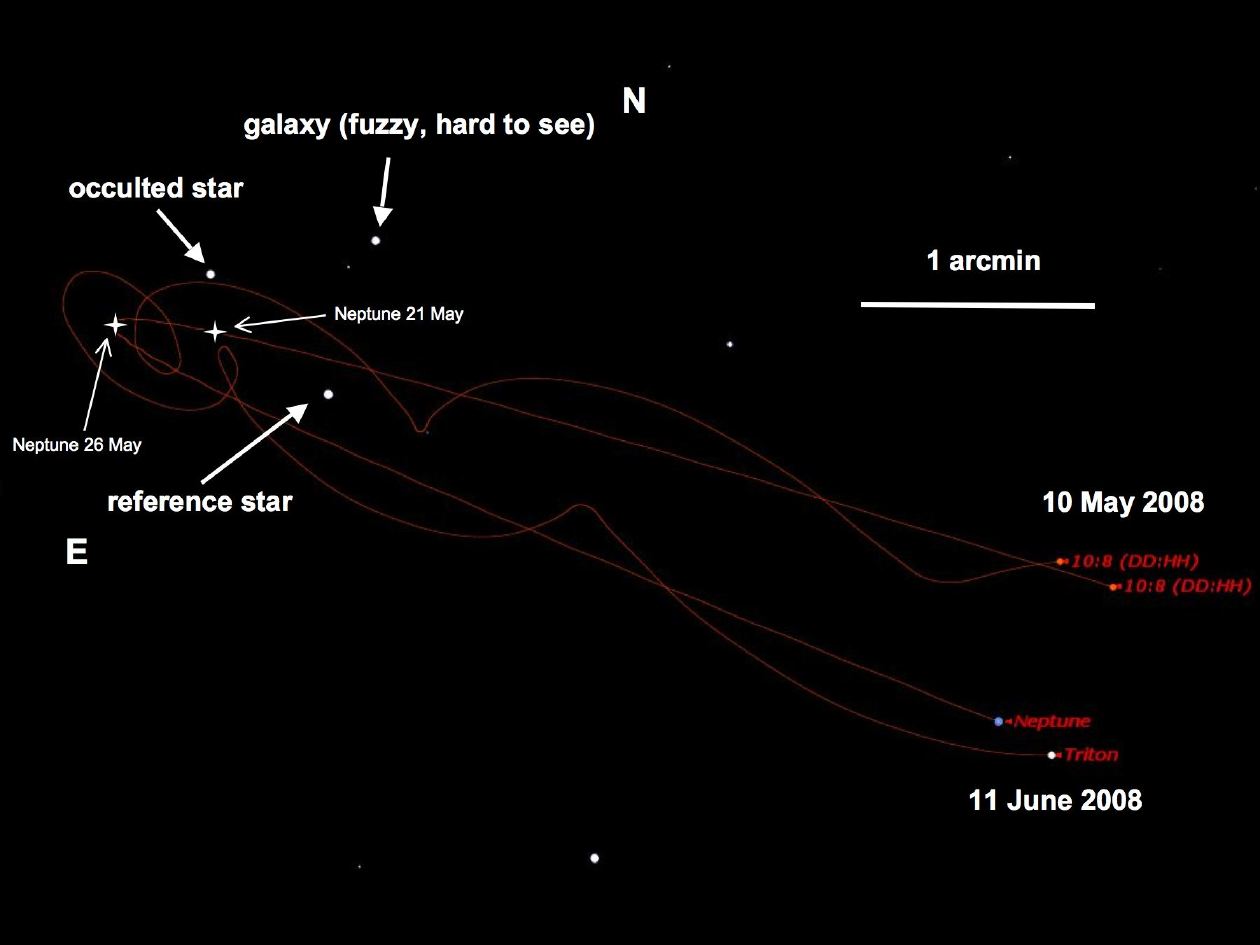 |
The Triton stellar occultation of 20/21 May 2008
(visible from Indian Ocean and southern Africa)
On 21 May 2008 near ~ 01:45-02:05 UT (night 20/21 May 2008 UT), Triton will occult a star,
as seen from Indian Ocean, Madagascar and southern Africa.
This event is remarkable because:
(1) the star is relatively bright, yielding good contrast in visible bands (see below)
(2) It comes after more than ten years after the previous documented Triton occultation (July 1997).
(3)
Neptune's station will happen on May 26, 2008, see figure belo.
Consequently, the shadow velocity is low, about 6.4km/sec,
corresponding to a maximum duration of occultation of more than 7 mn for stations near centrality.
Actually, because of the proximity of the station, Triton's path in the sky is remarkably twisted, due to the slow motion of Neptune and the satellite revolution around the planet, see below:
 |
Links:
| International Occultation Timing Asociation (IOTA), European Section |
| Leslie Young's occultation page (SWRI Boulder) |
| MIT occultation page |
| SWRI page on Triton |
Triton is undergoing an "extreme solstice", where the southern hemisphere of the satellite is being illuminated by the Sun, after centuries of winter time. In 2000, the solstice was actually attained: the sub-solar latitude reached 50 degrees south, for the first time in 650 years. This long period is the result of an interplay between Neptune's revolution around the Sun (165 years) and Triton's orbit precession period (680 years), see left panel below. Triton's atmosphere was only observed during the 1989 Voyager flyby, and a couple of times from Earth in the 1990's through stellar occultations. This is to say that the 2008 occultations is most timely!
Goals are (1) monitoring Triton atmospheric pressure, to detect for instance a drastic increase of pressure due to this extreme solstice, (2) detect hazes through multi-wavelength observations and (3) detect the central flash, from which a wind regime in Triton's atmosphere.
click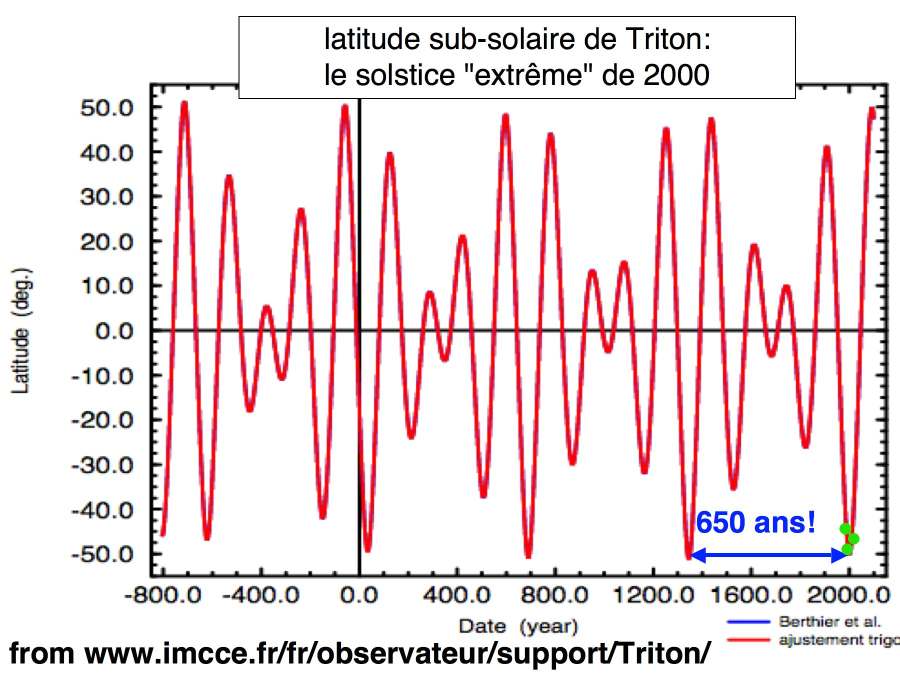 |
click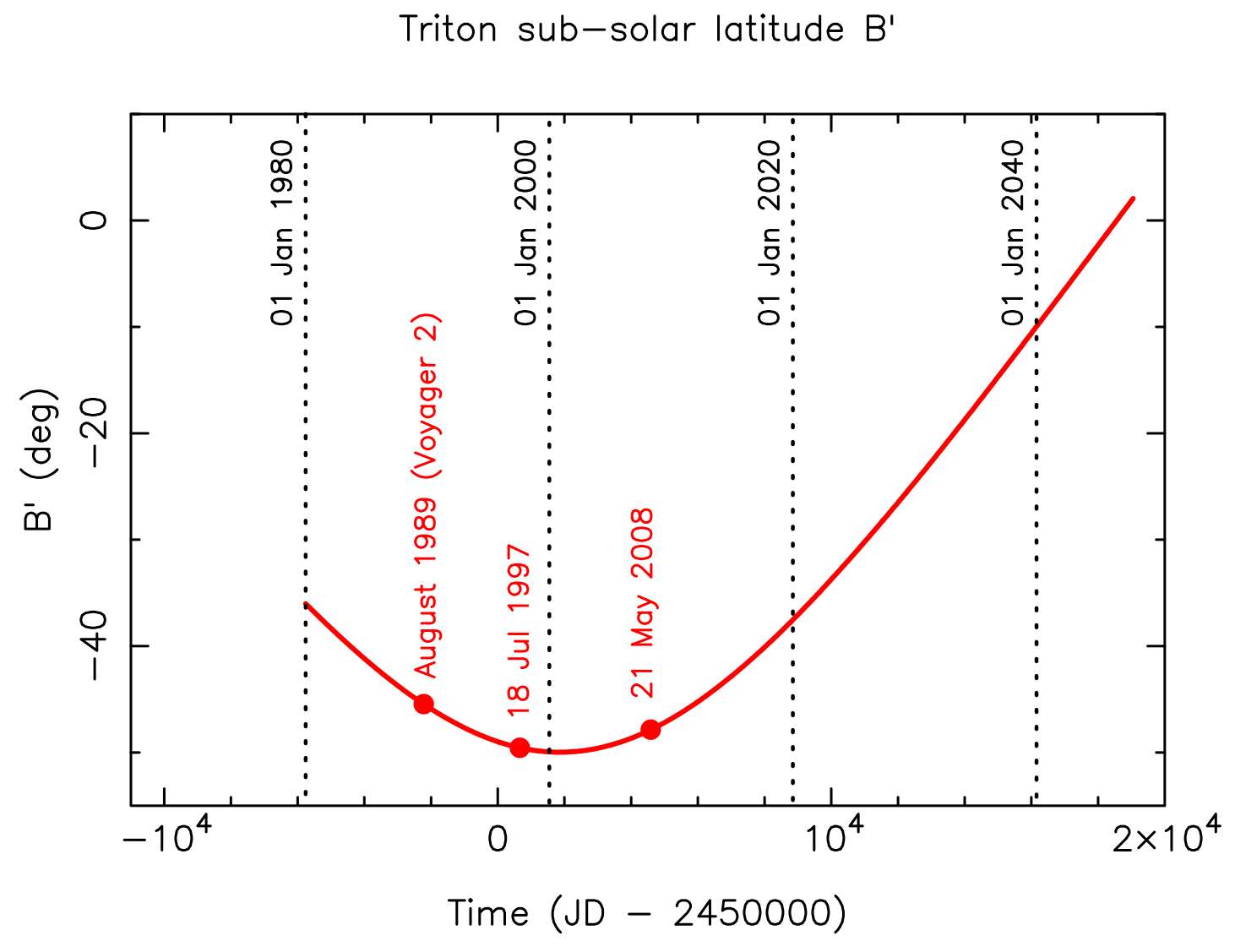 |
Astrometry:
As of November 2007:
Coordinates of star, from the Rio de Janeiro group (R. Vieira Martins, M. Assafin et al.),
based on 352 images taken during 8 nights end of August/beginning of September 2007:
r.a. = 21h 46m 11.048304s +/- 22.9 mas
dec. = -13g 46m 45.92791s +/- 17.0 mas (ICRF J2000)
The Rio group also derived Triton ephemeris offset, based on 78 images:
(O-C) r.a. = +70.6 mas +/- 24.4 mas
(O-C) dec. = -88.0 mas +/- 19.0 mas
| |
|
click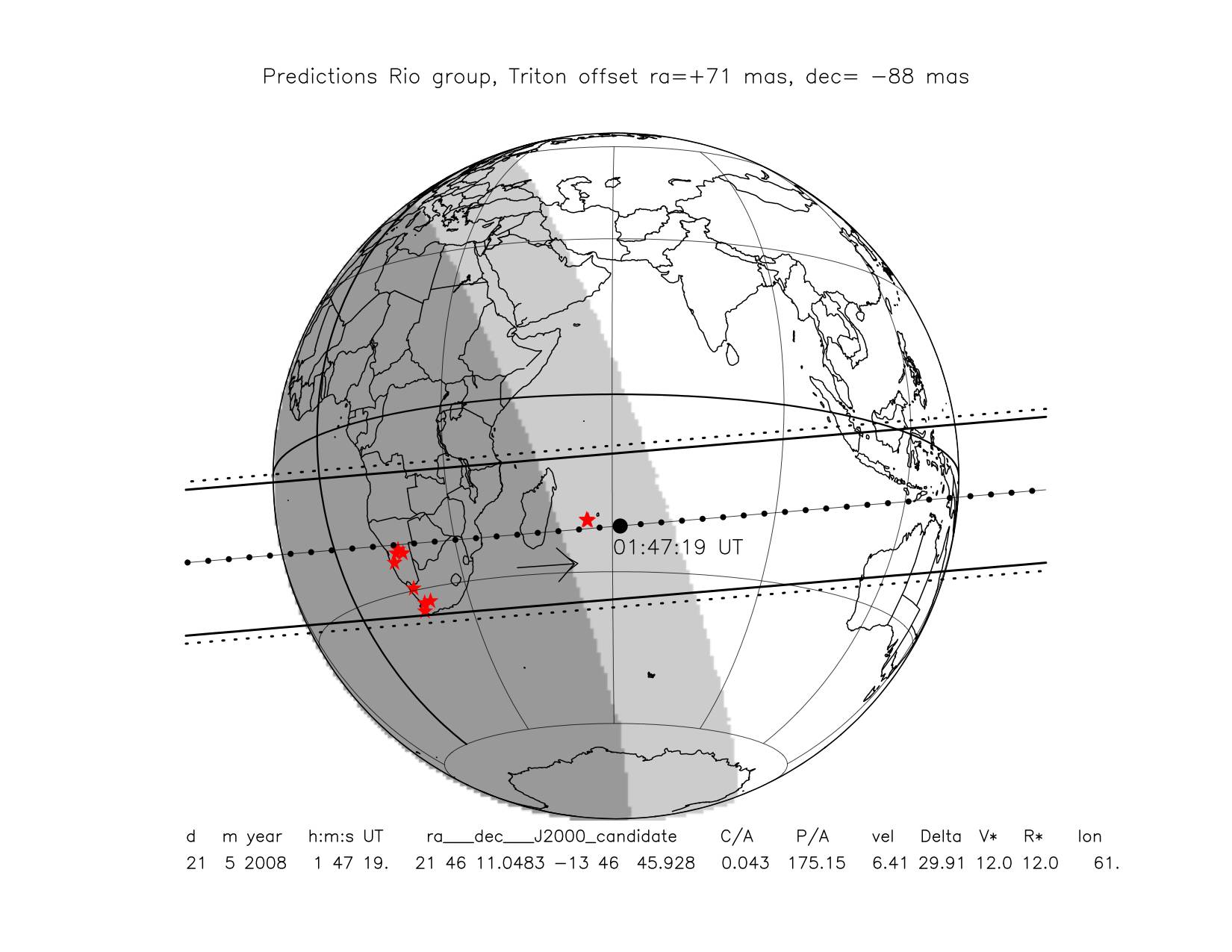 |
click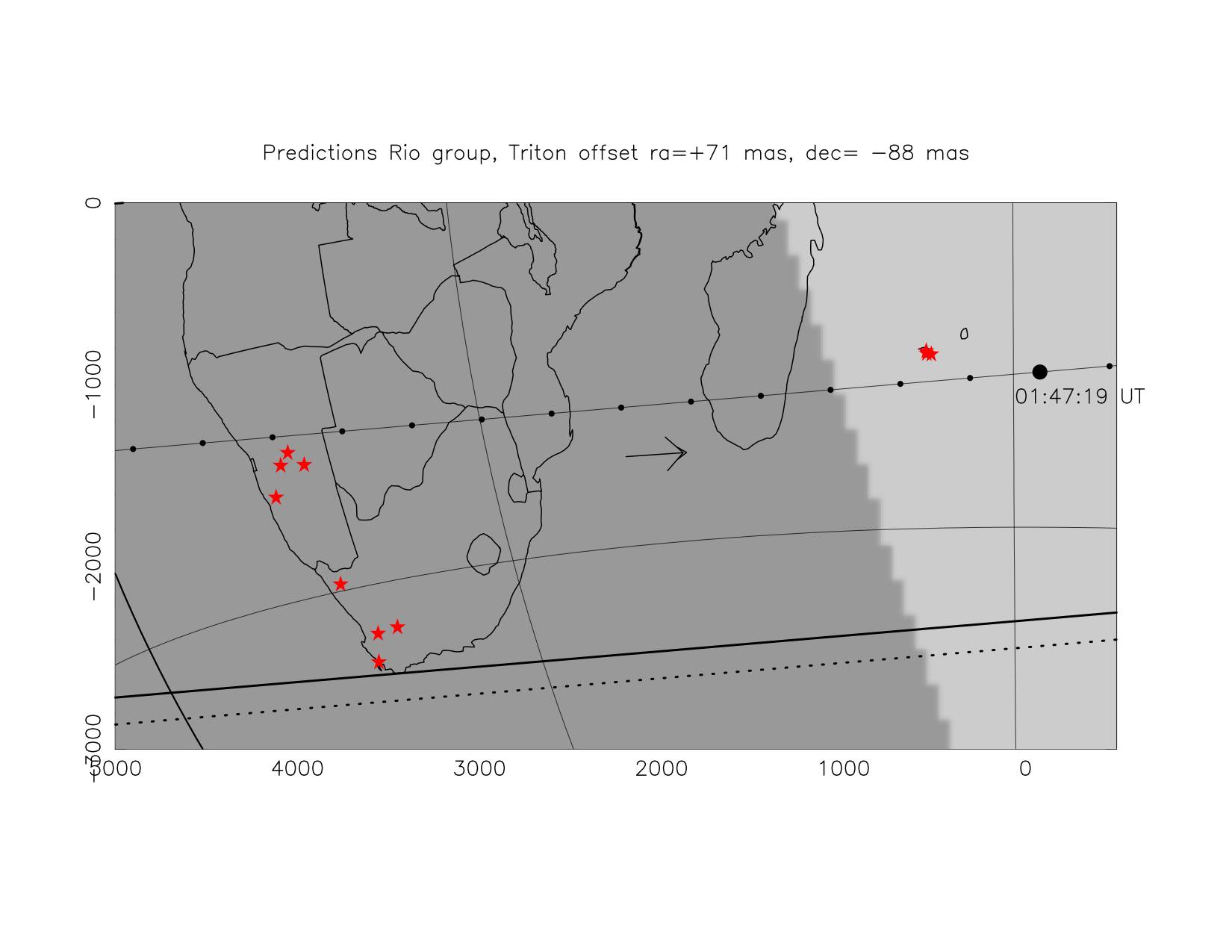 |
Shadow track on Earth, light grey corresponds to astronomical twilight, darker grey is night time. NB. Black lines: Triton geometric shadow (i.e. without atmosphere), Dotted lines: extension of atmosphere. The dots on central line plotted every mn, shadow moved from **left to right**. The larger dot is geocentic approach. Maximum duration of event is more than 7 mn, uncertainty in timing is typically +/- 2 mn, uncertainty in shadow track on Earth is typically +/- 800 km. Red star symbols are expected observing stations.
As of 27 April 2008:
Coordinates of star, from the Rio de Janeiro group (R. Vieira Martins, M. Assafin et al.),
based on 46 images taken during 2 nights on 16 and 17 April 2007:
r.a. = 21h 46m 11.049528s +/- 39,8 mas
dec. = -13g 46m 45.9484716" +/- 26.3 mas (ICRF J2000)
The Rio group also derived Triton ephemeris offset, based on 44 images:
(O-C) r.a. = -48. mas +/- 20.2 mas
(O-C) dec. = -130.8 mas +/- 24.8 mas
| |
|
click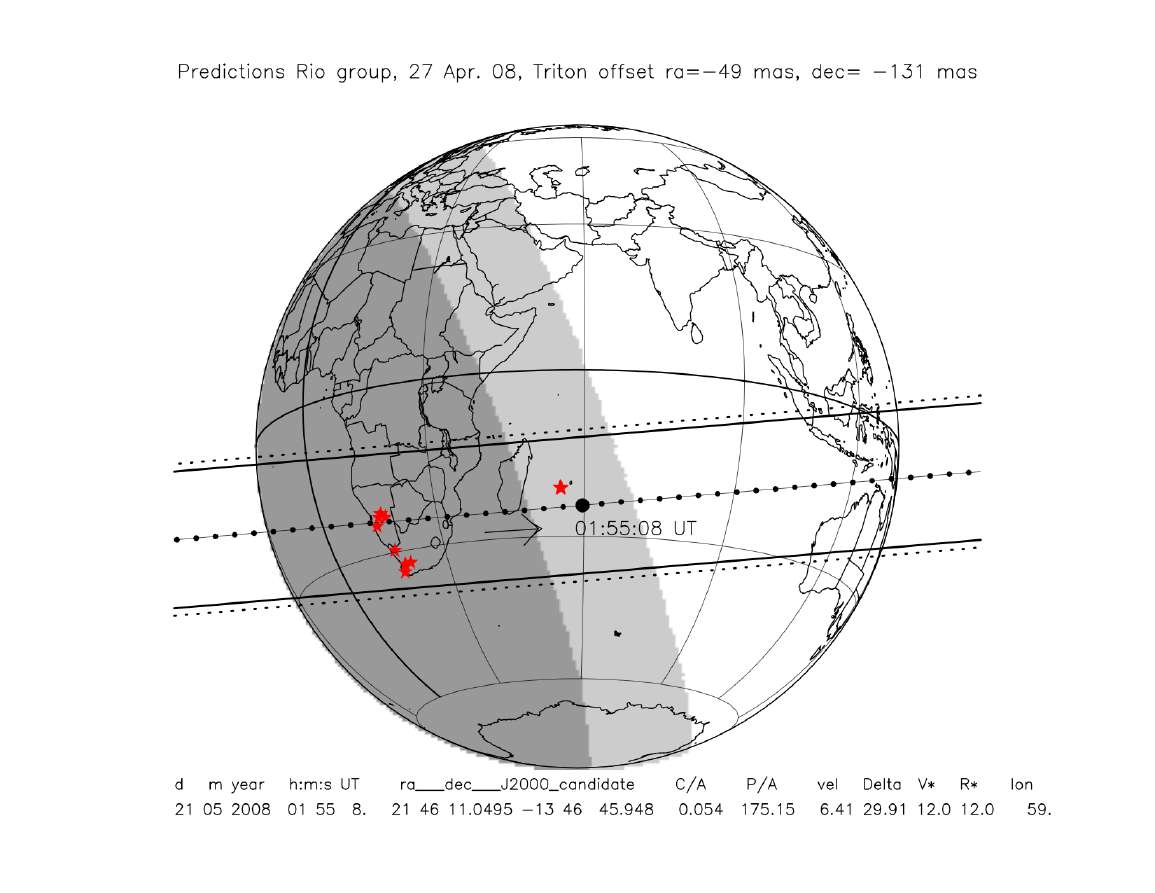 |
click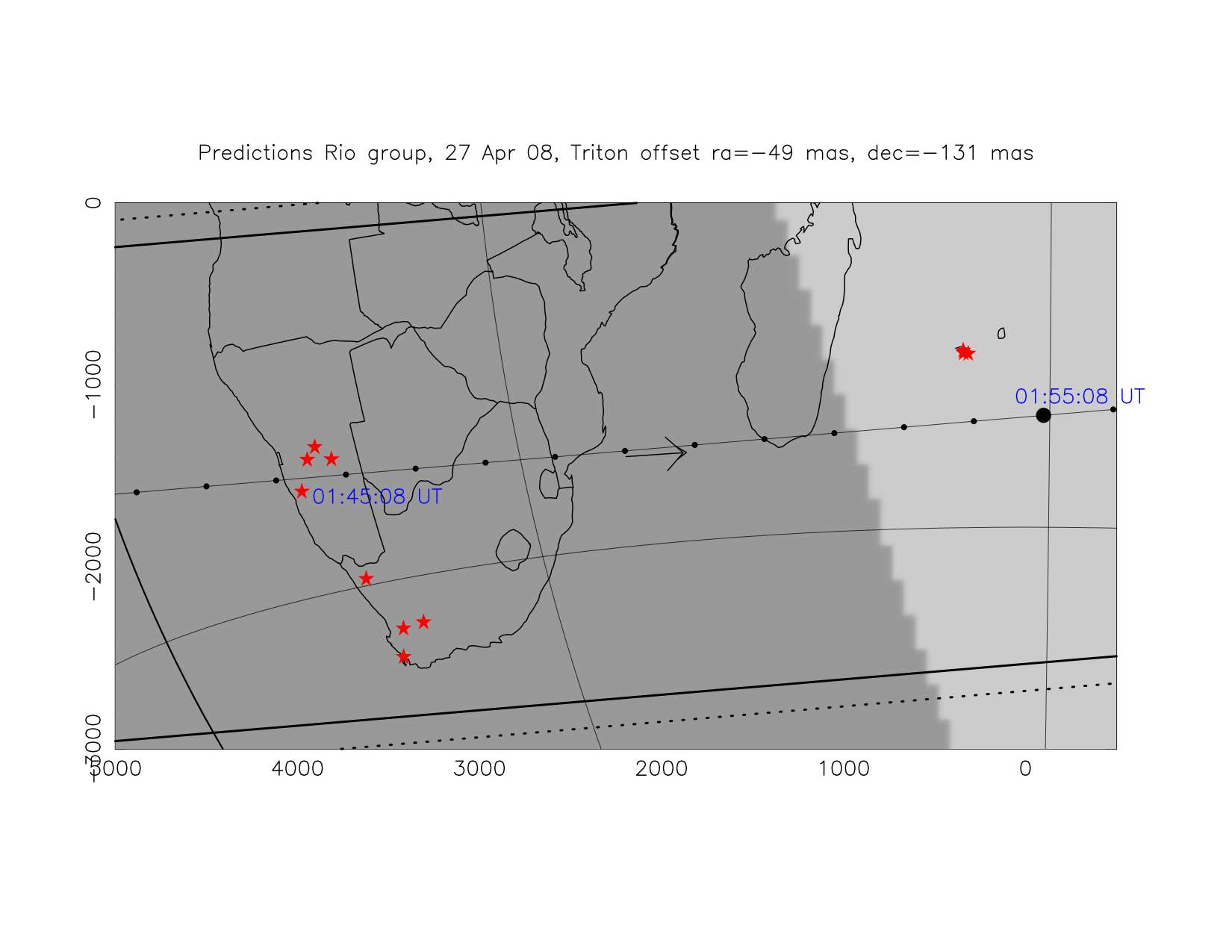 |
Same as previous figure, but for the 18 April 2008 prediction. Note that teh shadow track has been shifted south by ~250 km. THE MAIN DIFFERENCE IS IN TIMING: THE EVENT HAPPENS 8 MN LATER THAN FOR THE NOVEMBER 2007 PREDICTION.
Photometry:
Star magnitudes, obtained from Pic du Midi Observatory 1.05m telescope, by Jean Lecacheux.
| Star magnitudes: | B= 14.1 | V= 13.5 | R= 13.1 | I= 12.6 |
| Contrast of occultation [star/(star+Triton)] |
B= 30-60% (uncertain) | V= 40-50% | R= 45% | I= 50-55% |
Thus, the occultation depth should be reasonably good at all visible bands, allowing multi-wavelength experiments at a given sites. Also, the slowness of event allows to get good scientific return even with cycle time of 1-2 sec. Of course, if SNR permits, smaller cycle time is welcome.
Fields of view:
click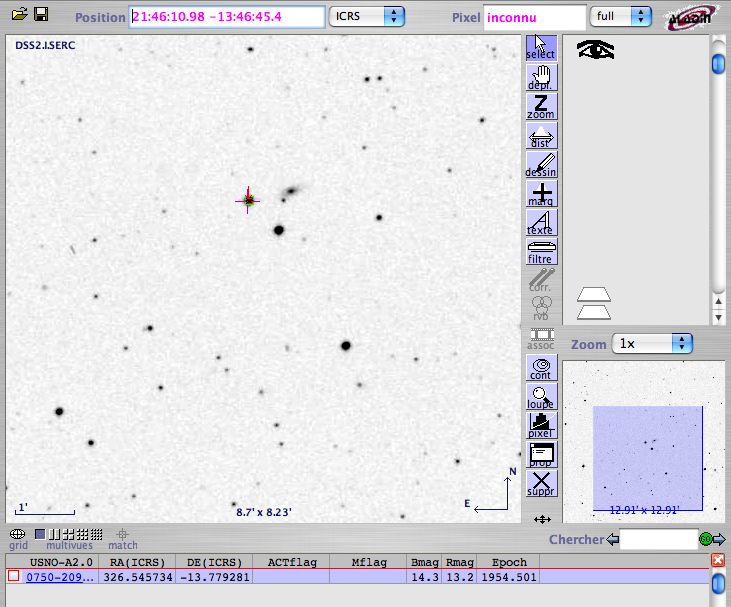 |
click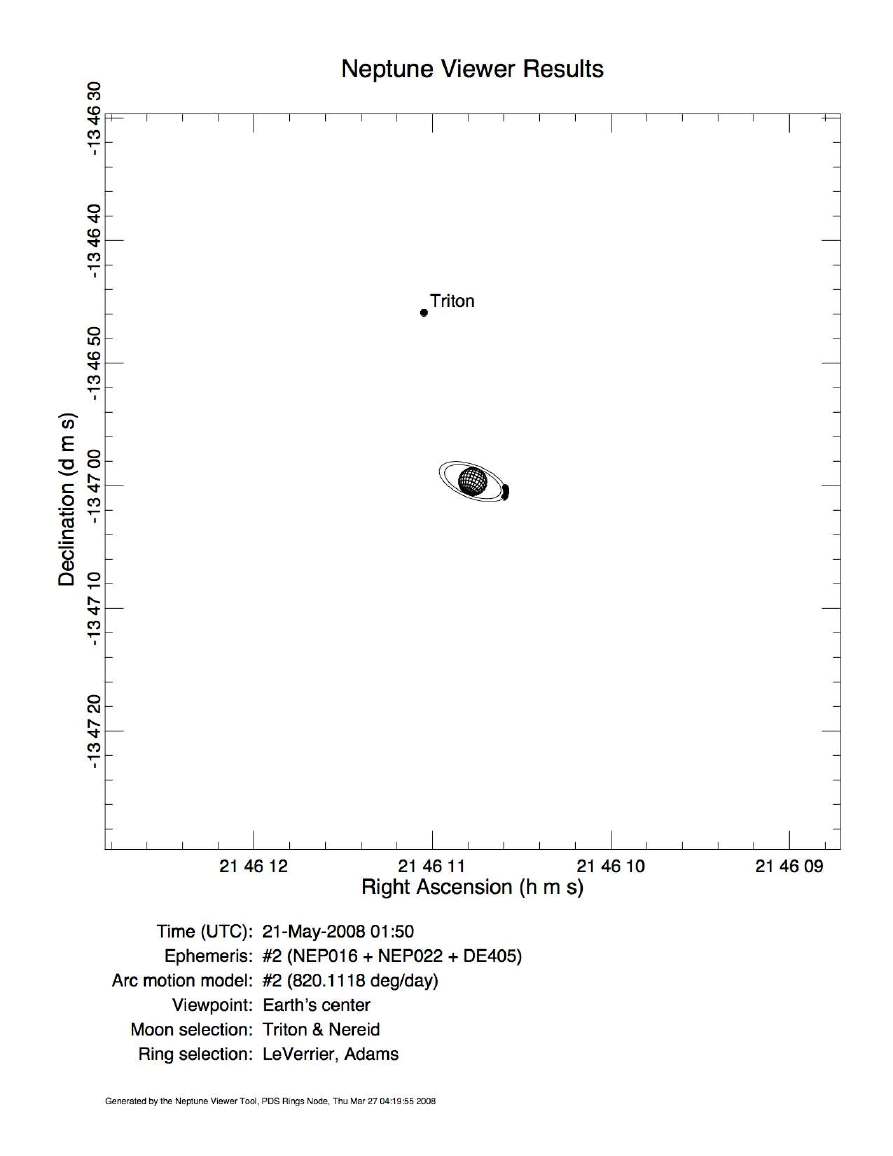 |
Practical issues:
The images below show a 8.7x8.2 arcmin FOV, around the star (red cross).
The first panel gives the
J2000 and apparent coordinates
for the star (do not mix up the two!).
The second panel shows
two possible reference stars,
which have fluxes comparable to the occulted star, one at 42" from the target, the other one at
2' 55"= 175".
Note that the latter is probably too far away to be usable in some cameras with small FOV.
Note also that Neptune
will probably be saturated
on most cameras, so that it will not
be usable as reference. Note also that Triton+star will be at about 14" from Neptune
at the moment of occultation.
So, a Barlow might be useful for separating better the planet and the satellite
on the smaller instruments, or for cameras with large pixels.
The lower panels show the location and direction of motion for Triton on 20 May 01:00 UT
(night before the event) and on 21 May 01:00 UT (just prior ro event).
It is very important to measure the occulted star against the reference star(s) the night(s) before
(or after) the event.
This will allow us to calculate the contribution of the occulted star to the
total flux (star+Triton) during the event, and finally, subtract Triton's flux from the light curve.
Note that Triton may have a variation of brightness from night to night, as its orbital period
around Neptune is ~6 days.
So, albedo features can cause brightness variations
(several 1% ??) as Triton rotate in front of us. Thus measuring Triton against the reference stars
the nights before or after the event might not give a correct value of Triton's contribution
during the occultation.
click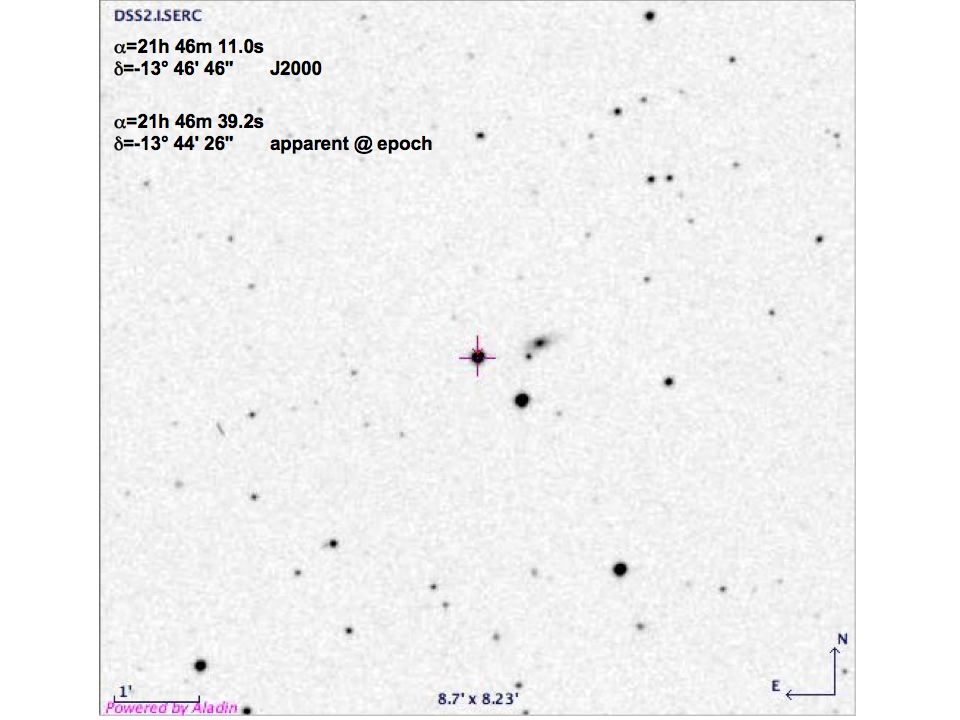 |
click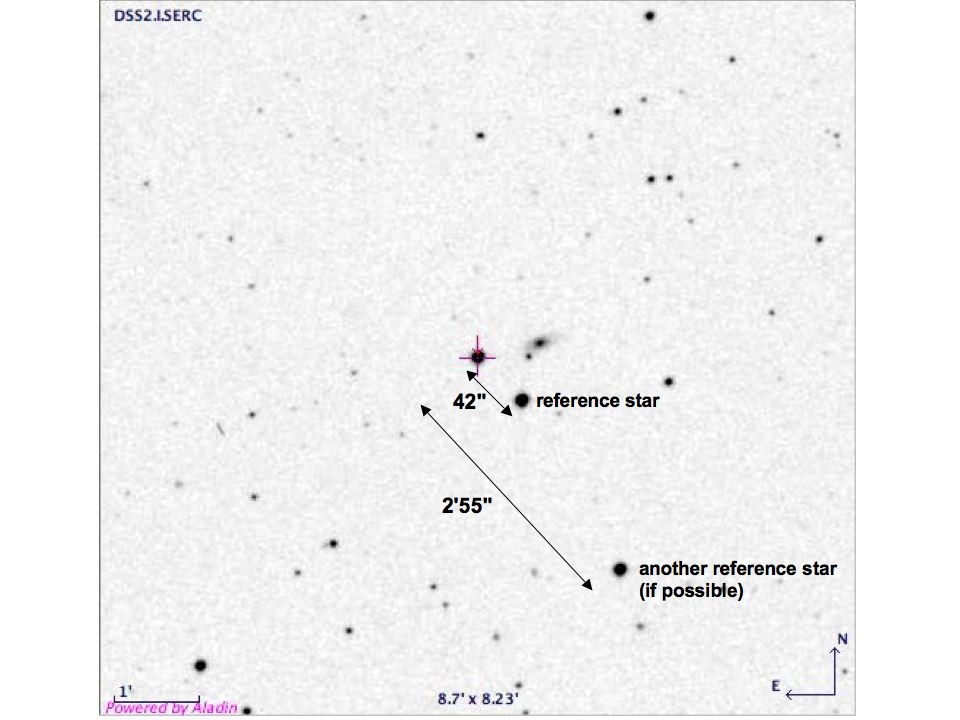 |
click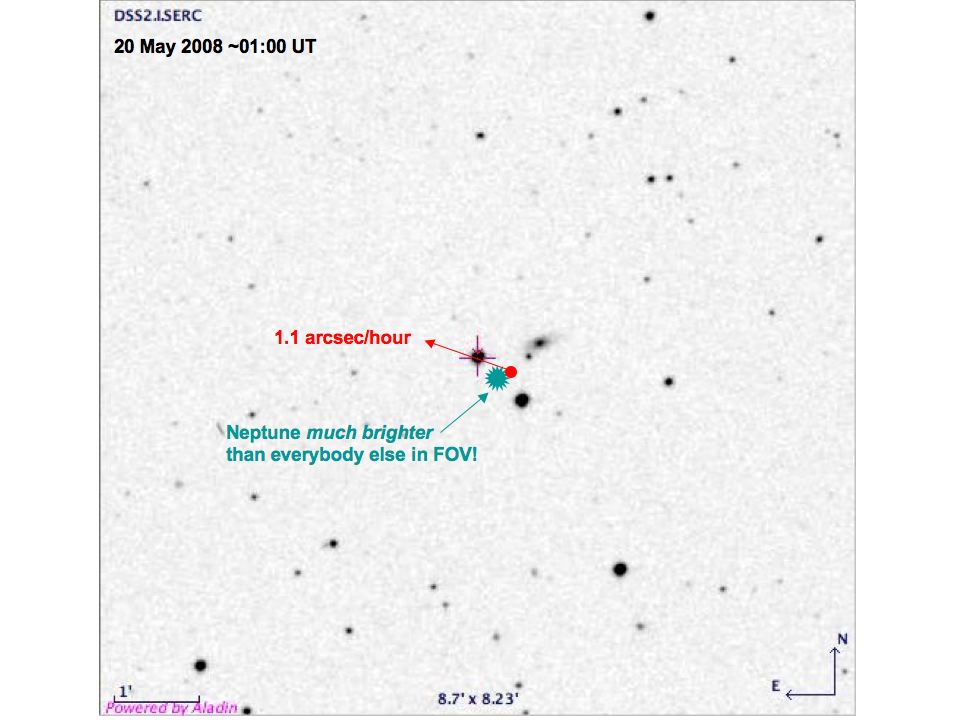 |
click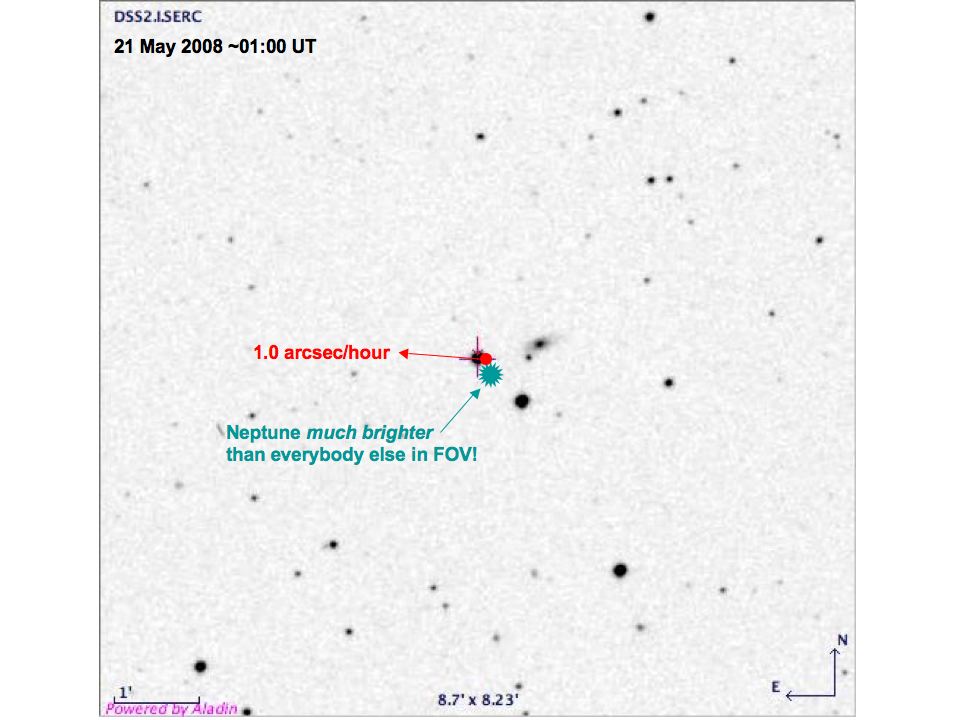 |
For contacts, more information and/or comments, you can contact me by email at:
bruno.sicardy@obspm.fr